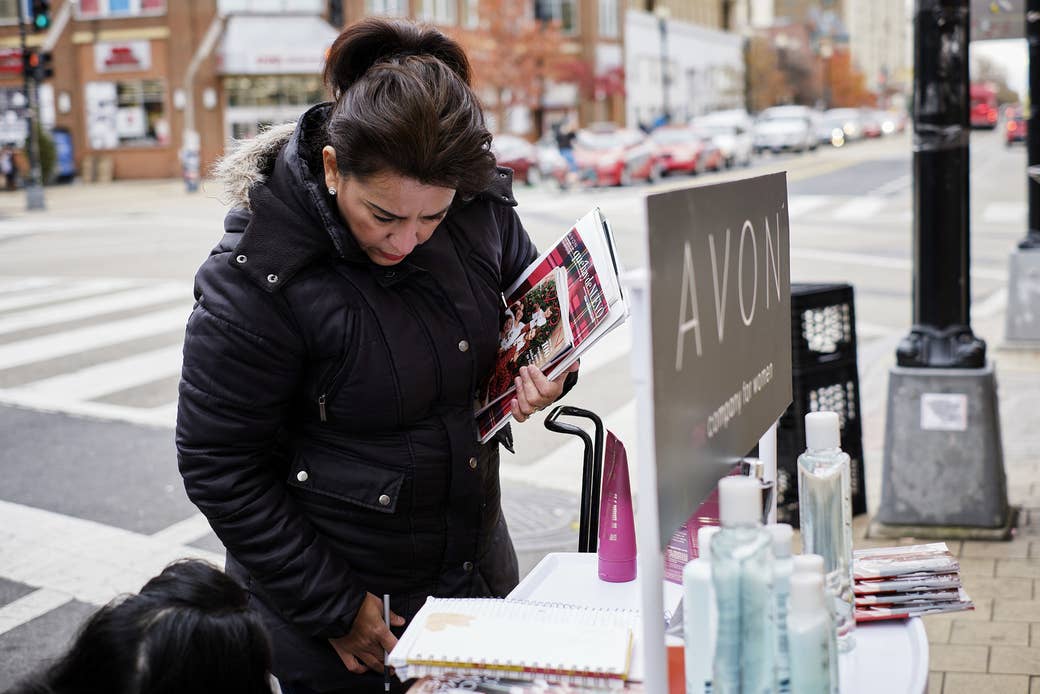
“What you want is to get the name and number,” says Ana Abani. We’re standing on the sidewalk outside the Megamart Latino supermarket in suburban Takoma Park, Maryland, with a group of Avon cosmetics representatives on a humid morning in May. Abani, 44, wears her thick, dark hair in a ponytail. Her eyes are rimmed with charcoal liner, and she has on a bright pink Avon T-shirt, which matches her smack of pink lip gloss.
Abani is a Bronze Executive Leader–level Avon representative (a rank she qualifies for by having at least 10 representatives under her, including at least two leaders, and pulling in 40,000 in team sales) and has her routine down to a friendly efficiency. She’ll start by flagging someone in passing — it’s mostly middle-aged women and women with children, both ideal recruits, at the market at that time of day — with a quick greeting in Spanish, ask to add the person’s name, number, and email to her lined notebook, and then send them off with a brochure listing Avon’s offerings, which range from more traditional beauty products to clothing and experimental vitamin supplements. The transaction takes about a minute.
“Walking and talking is our basis,” Abani tells me. “If you give me five seconds, you’re going to allow me to tell you more.”
Abani was recruited in 2004 by David and Rosa de la O Gomez, a married couple in their early fifties who have been selling together for over 25 years and are now Silver Executive Leaders, the third-highest level of Avon leadership. Like Rosa, Abani had been a stay-at-home mother who needed a way to pull in more income when her husband was out of work. Now, within David and Rosa’s small army of nearly 1,800 recruits, she is one of about 200 sellers who have gone on to lead their own teams.
To an untrained eye, the day seems like a slow one, with hardly any sales over the course of three hours outside the Megamart. But I later found out that’s because most of the selling happens after the day is done. Avon stresses to its representatives in training that a “no” normally just means “not right now.” Abani will take the names and numbers she’s collected to solicit orders before the campaign is over. An experienced seller like Abani, who brings in $80,000 in personal sales a year, might sell around $3,000 worth of makeup during each two-week campaign, and on a holiday like Mother’s Day, it’s possible for a seller to meet that amount in just one day. Last year, the entire Gomez team pulled in over $5 million in sales.
This is a form of entrepreneurship that has been working for over 100 years — even as Avon’s decades of door-to-door dominance have been threatened by the onset of the digital age. Avon is a multilevel marketing company, or MLM, that relies on sellers to recruit other sellers, who then earn a variable cut of their recruits’ sales, in addition to their own profits. Long before LuLaRoe and DoTerra clogged up our social feeds with patterned leggings and essential oils, or Mary Kay gifted its signature pink Cadillacs to top sellers, Avon — which was originally founded in 1886 as the California Perfume Company — sold a promise of upward mobility to women shut out of the US’s Gilded Age.
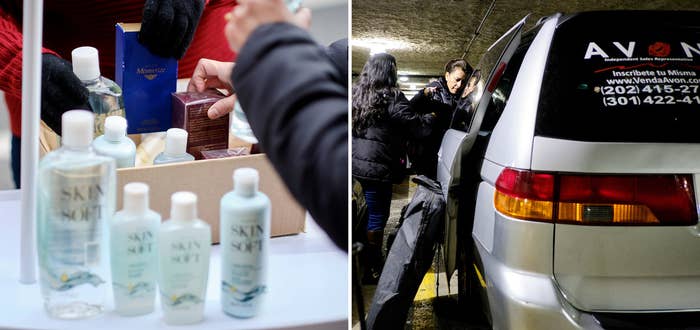
Despite predating these companies, the rise of digital MLMs and a changing cosmetics market has thrown the company into a bit of an identity crisis. Avon’s main appeal was that it brought high-quality cosmetics that weren’t formerly accessible into the homes of middle-income suburban women. But the internet quickly rendered the company old-fashioned. Rather than relying on a trusted neighborhood Avon lady for a new brochure every two weeks, online shopping made it possible to find high-quality, low-priced goods with the click of a button.
In the mid-2000s, it seemed like Avon’s misdirected focus on brick-and-mortar retail partnerships and lack of digital sales savvy would lead to its demise. Between 2007 and 2014 sales fell by more half. Efforts to turn around the company for the digital age made by CEO Sheri McCoy, who pushed for a stronger online selling platform and materials to support a growing number of Spanish-speaking sellers, had mixed results. Finally, in 2016, in an attempt to save the company, Avon sold off a majority stake in its North American division to private-equity giant Cerberus Capital Management.
Today, New Avon, as the North American sector of the company is now called, wants its sellers to host virtual “masks and margaritas” parties on Facebook, livestream product demos, and lead their far-flung recruits through Facebook groups and YouTube tutorials. In Avon’s transition to social media, however, the company may have overlooked one part of its former iteration that had been working: tapping into the power of Latino sellers.
At a time when social media is supposed to make selling easier than ever before, it’s created a new set of hurdles for some of Avon's most committed sellers.
For decades before McCoy took the helm of the company, recruiting Latino representatives to reach the growing Spanish-speaking market in the US had won the company some of its top sellers. Between 1988 and 2002, the percentage of Latino representatives jumped from just 7% to 13%, and that growing workforce has generally pulled above their weight. In 2014, the top 10 of 850 selling districts were primarily Latino and 31% of Avon’s top-selling and recruiting leaders were Latino. And while the company declined to provide current demographics of its sellers or buyers, an informal look at the rankings Avon released at its national convention this year seem to reflect a similarly impressive showing. Nearly 50% of the top 20 highest-ranking sales leaders and teams are Latino, an estimate the top sellers familiar with the community confirmed.
But the sales materials Avon offers sellers who target Spanish-speaking and Latino consumers haven’t expanded at a pace to match this demographic shift. In 2002, Avon launched a bilingual catalog called Avon Eres Tú, which offered products specifically designed for Latino skin tones and sensibilities. But the product line only lasted one year, with the company citing a lack of interest. Avon representatives couldn’t confirm exactly when the company first introduced Spanish-language versions of its standard marketing materials in the US; according to Fortune, it wasn’t until 2014.
Spanish-speaking sellers have become Avon’s not-so-secret weapon; if selling the company’s products is their livelihood, then their sales are arguably a major component of what’s been keeping the company in business. But some of these representatives feel that they aren’t getting the support they need from Avon to realize their full potential. Ironically, at a time when social media is supposed to make selling easier than ever before, it’s created a new set of hurdles for some of Avon's most committed sellers.
“The excuses they give us is that we show no interest in learning,” Abani told me at our first meeting, talking about how she’s dealing with the company’s push for sellers to be more active on social media. She said that while Avon offers ample training to English speakers, there’s been less consistency in training for Spanish speakers. And, Abani said, an emphasis on online shopping and social media sales also just doesn’t translate to most of their customers, who are primarily other Spanish speakers.
“In the Spanish community, it’s about touch, see, and buy,” Abani told me. “If we like it, we buy it.” But that doesn’t mean that she and her team won’t do their best to get on board with the shift to social media, if that’s what they need to do to succeed. Before I left their sales table that day in May, David and Rosa made sure to get photos of me with their team. After I posed for my fifth sorority-squat photo of the day, hunching down with a thumbs-up to blend in with the petite women around me, Rosa asked, “You’re okay if we put these on Facebook, right?”
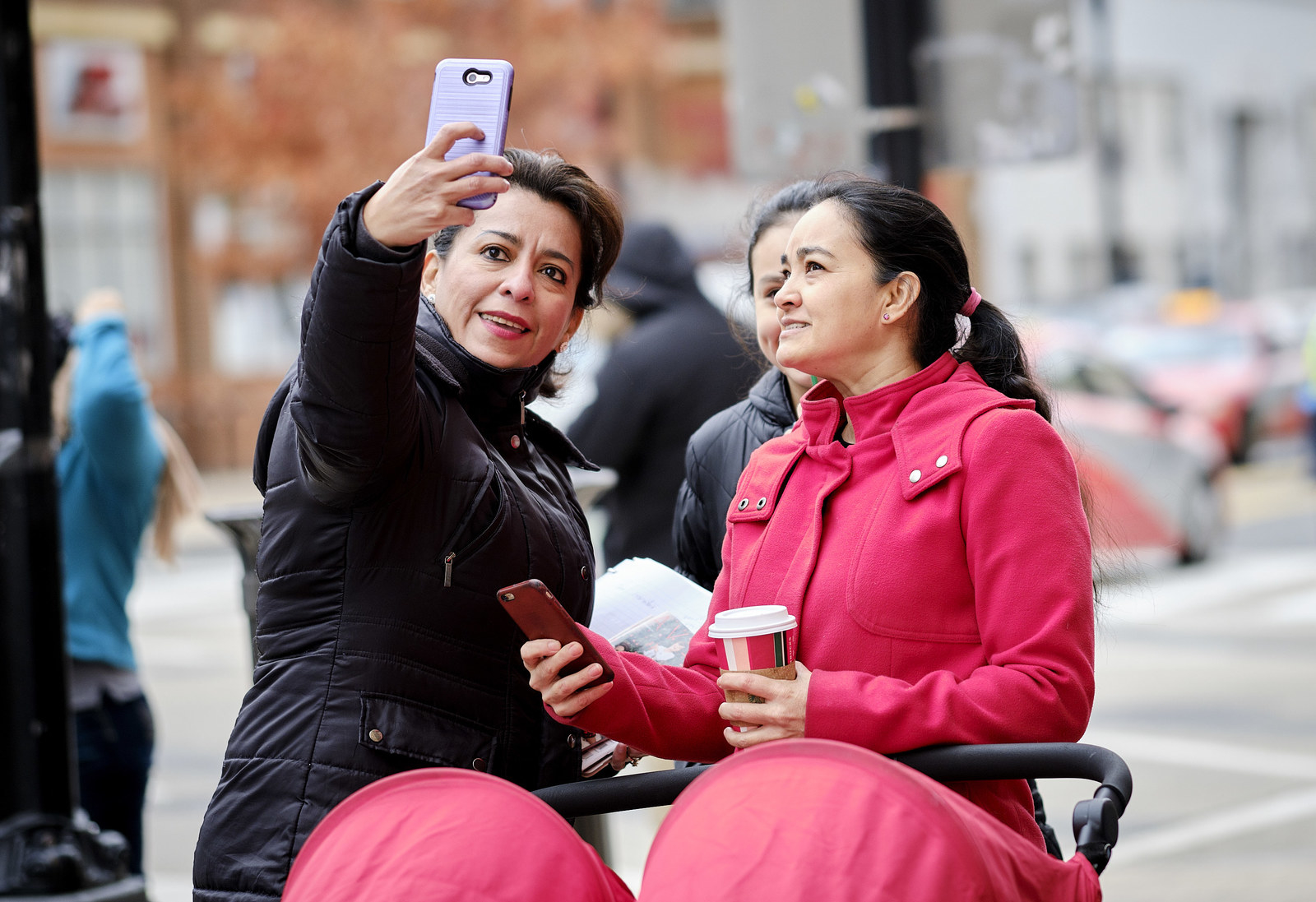
In 1886, David H. McConnell, a traveling book salesman, began giving away small vials of perfume alongside his books, thinking they would help him better market his books to women. McConnell soon realized that the housewives were more interested in the perfume, and later that year he founded the California Perfume Company with five signature fragrances. To sell his wares, McConnell — in what was then an unorthodox move — employed the women he met on his travels (single mothers, married homemakers, widows) as salespeople.
From the 1880s to the 1920s, McConnell’s California Perfume Company conscripted older, middle-class white women, ideally women who were well-respected in their communities, to sell his perfume. Saleswomen in one Avon Achievement Spotlight newsletter from 1948 credited the company with helping them achieve financial goals that would have otherwise been impossible — everything from home care for ailing relatives to “a much nicer Christmas than they would otherwise have had” for Mrs. Lillian Gormley’s children. These women would, in turn, hire other women like them.
Although there was no company mandate against hiring women of color, managers were informally encouraged to instruct black sellers to only sell in predominantly black parts of town and to ask for an extra deposit for merchandise. Throughout the 1950s and even the ’60s, when the company began advertising in publications like Ebony, the Avon lady was still widely depicted as a model of white womanhood, and the sales model played up the post–World War II ideal of domesticity. By visiting other women at home to make sales (“Ding Dong! Avon Calling!”), Avon women were able to embark into the sales economy without upsetting the status quo.
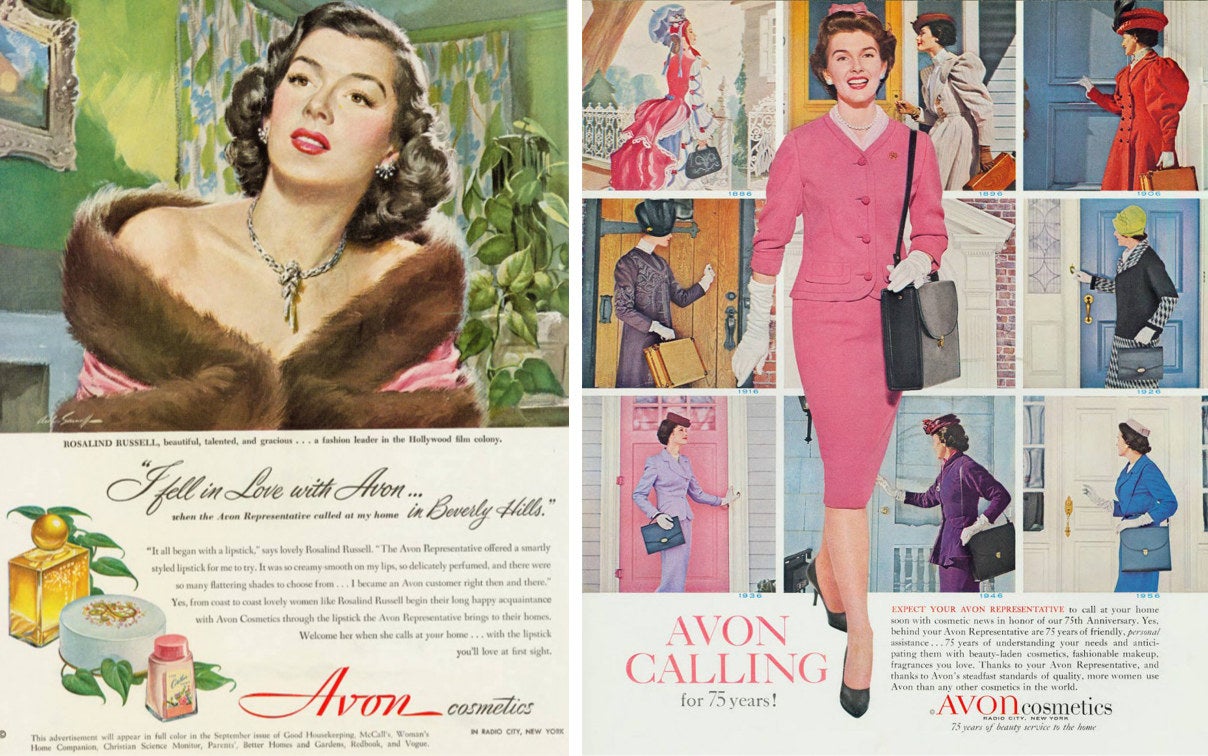
Avon’s history with Spanish-speaking sellers was a bit different. The company, which launched in the Latin American market in the 1950s, was already well-known to many of the women who would get into selling when they crossed the border into the US in a wave of immigration during the 1980s. A 1988 Los Angeles Times article about the Mexican-born head of Avon’s Los Angeles sales division noted that three representatives she managed led teams at the top of the national rankings; all three were Spanish speakers, two of whom had immigrated from Latin America (Ecuador and El Salvador).
In this context, Rosa de la O Gomez was a natural fit for Avon, even if she wasn’t who McConnell had originally envisioned as his ideal saleswoman. Born in 1967, Rosa grew up in Villahermosa, in southeast Mexico, in a poor family made poorer by a divorce when she was 13. When she was 17, she enrolled in a hospitality management course and started working at a local hotel after school. It was there that she met David, who was from the area but had moved to California when he was 13.
In 1988, David and Rosa got married and moved to Northern Virginia. One day, when her mother-in-law couldn’t make it to an appointment she had set up with an Avon recruiter, Rosa went instead. She was familiar with Avon; she’d grown up trying her aunt’s magnolia-scented Odyssey perfume. She signed a contract that day to start selling.
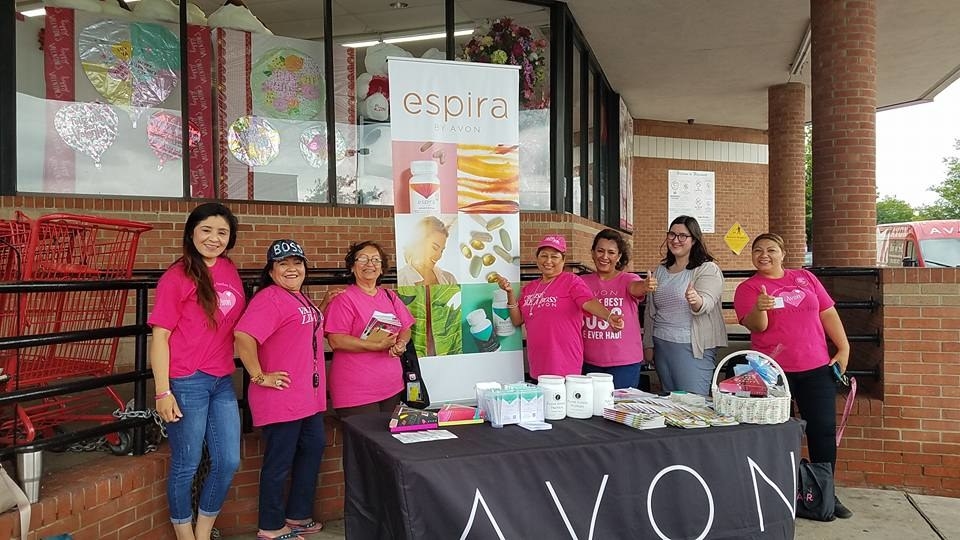
Rosa initially found the new venture overwhelming; the first time she went to hand out catalogs at a local laundromat, still knowing very little English, she cried. Determined to keep going, she combed the phonebook for Spanish-sounding last names, calling sometimes up to 50 numbers a day. She relied on David, who had a job as a construction worker, to drive her to appointments and communicate with the regional manager, who didn’t speak Spanish.
Rosa eventually took a break from Avon for three months to support David’s pursuit with another direct-sales company, Shaklee, which sells natural supplements. He ended up losing thousands of dollars, and with their debt mounting, they were unable to keep their apartment.
Finally, David agreed to give Rosa two months to show they could make the money they needed with Avon. He would help her, but he wouldn’t sell directly, wary his friends would taunt him for selling women’s products. She started drafting a detailed plan that night; when he woke up the next morning, she was still writing.
“She was all smiles, and first thing she said was, ‘I got it. I figured out how we’re going to work this out,’” David told me when I met with the couple in late May, near their home in Northern Virginia. The first step was buying 500 catalogs to hand out to potential customers. From the sales they made, they would take their earnings and reinvest them into another 1,000, and then 5,000 brochures. Rosa also took to reading the kind of self-help business books by writers like John C. Maxwell and Tony Robbins that still dominate Avon training today. (“Your income right now is a result of your standards. It is not the industry, it is not the economy,” is one Robbins maxim that seems to be popular among Avon sellers.) After her children were put to bed, she spent hours each night teaching herself English.
“Avon is looked on as a pyramid scheme, but it’s not. In Avon you don’t have to depend on anyone else to advance.”
Within their first year, Rosa and David were averaging $7,000 in sales per campaign. Soon they had built a regular customer base of over 800 names they could convert into sellers who, like Abani, could go on to build sales operations of their own. By 1997, they had a team of 500 people. Helping other people become entrepreneurs is what they say motivates them to keep working with Avon. “The whole idea is we wanted to help our community,” said David.
But of course, helping the community also comes with an economic incentive: The better the recruits in their “downline” do, the more money they earn on commission. The exact percentage depends on a lead seller’s rank in the Avon hierarchy, though recruits insist it’s not a scam. Unlike most MLMs, which require sellers to buy expensive inventory up front (including Avon’s main legacy competitor, Mary Kay), Avon sellers only order what customers need. “Avon is looked on as a pyramid scheme, but it’s not,” said David. “In Avon you don’t have to depend on anyone else to advance. Even if I recruit just one person, I’m not limited in growing.”
But recruiting is essential to reaching top earnings. Platinum Executive Leaders, the highest level of leaders, can earn 8% commission off the sales of their first generation of recruits, all the way to 1% of the sales of their fifth-generation recruits. This, on top of 50% of their own sales and a myriad of other bonuses for meeting campaign goals, can add up quickly. For David and Rosa, this means total take-home pay that averages $13,000 a month. The Gomez team is ranked 12th in the country in team sales for 2018. When David and Rosa first moved to the US from Mexico in 1988, they lived in a cramped one-bedroom apartment. By 2006, the couple was able to buy their dream house in Woodbridge, Virginia, complete with an indoor Jacuzzi and a two-car garage.
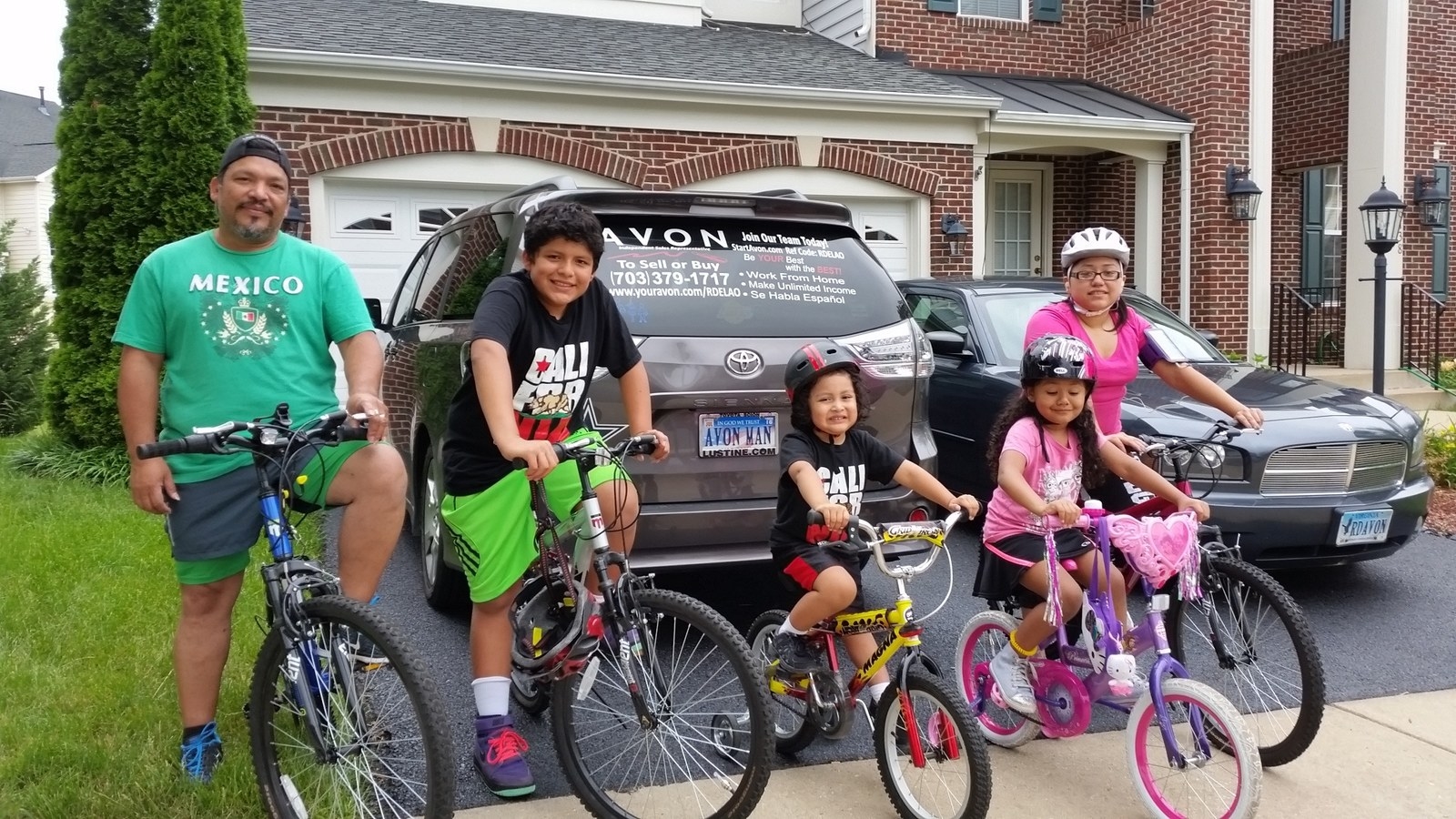
Nowhere is the loyalty and enthusiasm of Avon’s sellers more evident than at RepFest, the company’s annual convention, which took place this past July in Columbus, Ohio, just an hour from the company’s Zanesville distribution facility. Packed with a mix of leadership trainings, product expo, and “general sessions” that are part live QVC commercial, part award ceremony–style showmanship (Rascal Flatts performed), the event is the zenith of inspiration for thousands of “Beauty Bosses,” as New Avon calls its representatives. Most of the attendees in Columbus were well past the age of attending wild bachelorette parties, but still clearly appreciated the pink strobe-lit, pseudo-sexual energy of one — and the presence of the male models, or “heartthrobs,” who were employed to hand out giveaways and flex in photos. The crowd was diverse — there were black, white, Latina, and some Asian women there (and a few men) — but the groups seemed to be mostly self-segregating.
Avon groups its sellers into structured tiers and titles — ambassador, leader, or executive leader, with bronze, silver, gold and even platinum levels — in order to fuel their ambition to reach the next rung on the ladder. And recognition of those who do rise through the ranks is something that Avon takes seriously. In addition to earning bonuses like trips to Maui or a chance to win a new Mini Cooper, parades of sellers were called up onstage at RepFest in recognition of various accomplishments, ranging from the hundreds of women who had made executive leader status that year to the dozen or so who were still selling after 50 years. Nearly all were livestreaming or taking selfies as they were called up for their 15 seconds on the stage of the Nationwide Arena, a savvy tactic to keep the attention of recruits and customers back home who couldn’t be there. Like all successful MLMs, Avon knows that the aspirations it sells are more important than the makeup.
The motivational programming painted a glowing picture of potential: Here’s who you can be with Avon. Aside from Sunday’s keynote speaker, Shark Tank’s Barbara Corcoran, almost every speaker was an actual Avon rep, and the message they sent was about the power of bootstrapping: Hard work means big rewards. I heard story after story about enterprising women who overcame obstacles from bad bosses to abusive husbands and, through the power of self-motivation (and Avon products), were able to top the sales list and now sashay on stage with a hip-length leopard coat and perfect blowout.
Many of these stories about overcoming challenges were not that different from those I heard from Abani, Rosa, and their friends; Rosa told me with pride about one of her sellers who signed up from her hospital bed. Avon stories tend to celebrate financial success in an apolitical way that resonates with a bygone era of American entrepreneurial culture, free of any hint of performative guilt over how factors like race, class, gender, and even citizenship affect some people’s ability to climb the corporate ladder.
But for Spanish-speaking sellers, these realities are unavoidable. Rosa said that when she first started with Avon, she remembers being managed by white women with little or no Spanish, and designing her own flyers and pamphlets to supplement Avon’s English-only offerings. The company does now offer versions of its brochures in Spanish, but the culture and language barrier have manifested in other ways. And factors that may seem relatively minor, like how the company decides to enroll representatives (at RepFest it was announced that Social Security numbers would no longer be required, a huge boon for the immigrant community) and which languages new training resources are offered in, can have an outsized impact on its Spanish-speaking sellers.
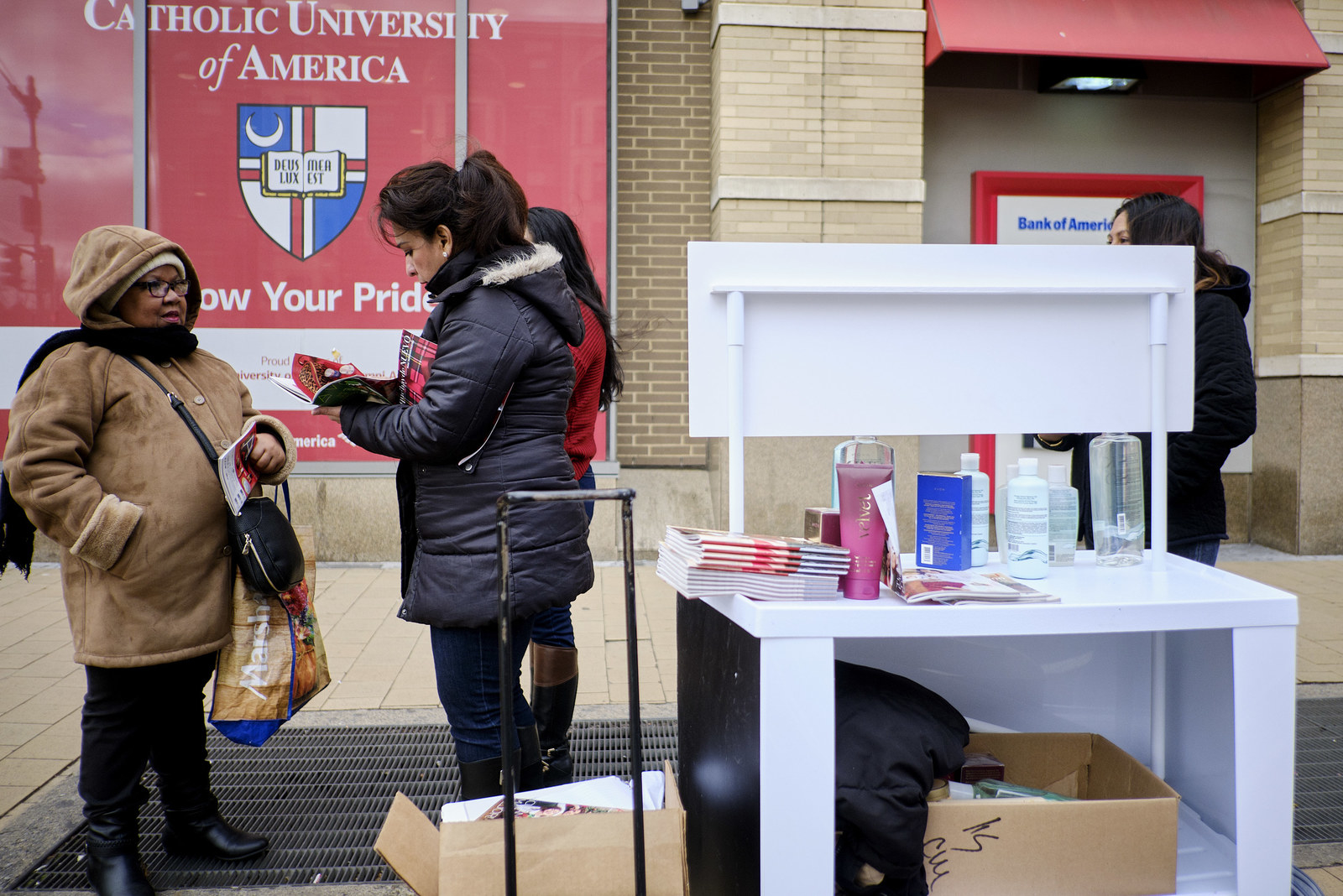
On the second day of the RepFest convention, I joined David, Rosa, and the rest of the Gomez team as they passed out their red team T-shirts to the sellers who had also made the trip to Ohio. The first thing on the day’s agenda was a leadership training for Spanish-speaking sellers, and the conference room was packed with people wearing red, teal, and mint-green shirts that identified them as members of the nation’s other largest Latino teams. After spending the preceding time in an English-led session in a much larger, half-filled convention room, I felt the energy of the smaller Spanish-track session as a jolt. Hands shot up immediately, well-prepared with lengthy answers to questions like “How do you connect your ‘why’?” and “How frequently should you meet with your recruits?”
But in the conventionwide events, you would have hardly been able to guess that the nation’s top sellers were Spanish-speaking. I counted around just 15 minutes of Spanish-language mainstage programming at RepFest out of over nine hours total. (The amount of stage time for Latino sellers speaking in English was longer, but still less than that given to white women.) And although Avon encouraged Spanish-speaking representatives to learn English during leadership training, at RepFest I never heard any encouragement of the reverse.
One of the few Spanish announcements on the main stage was that the company would be updating its social scheduling tool, created by an outside consulting firm called Multibrain, to include posts of inspirational quotes and product promos that translate into both English and Spanish. These kinds of changes make a difference on a day-to-day basis, but at a company like Avon — where representatives take the message of being their own bosses to heart — the sellers I spoke to say it’s still not enough.
“They’ve started to listen, little by little.”
Company representatives shot down claims I had heard from Abani and other sellers that the company consistently failed to provide equal resources and training in Spanish. “The demographics no longer exist once you walk through our door. It’s just Avon,” Ivonne Cabrera, a regional vice president for the company, told me in an interview after RepFest. Cabrera, a Spanish speaker who got her start with Avon in its Los Angeles distribution center 16 years ago, said that she can’t remember a time where there wasn’t a Spanish brochure, and representatives from the company insist there is no difference in quality between English and Spanish resources. Rather, they explain, it is up to individual leaders to make sure that their representatives are aware of the training and resources Avon provides.
It’s also hard to say that Spanish speakers have it any worse at Avon than at other MLMs. Companies like Mary Kay, Avon’s decadeslong rival, and Herbalife, which has a largely Latino workforce, have been accused of preying on low-income and already vulnerable immigrant workers, saddling them with debt and little payoff. Many newer MLMs like LuLaRoe, a popular company with millennial moms, don’t appear to have any resources for Spanish speakers at all.
But social media has, in some ways, made it harder for more traditional sellers like Rosa to have a voice in the company. For years, the Avon corporate team’s solicitation of their feedback, invitations to meetings in New York, and a rewards-driven culture for leadership were points of company pride for Rosa and David. They have pushed the company to explore more products that cater to the Latino market. They’ve even formed a committee with other top Latino sellers to try to bring their suggestions to corporate in a more organized way, but the progress has been slow.
“They’ve started to listen, little by little,” Rosa told me when discussing her relationship with corporate. “But I think they listen more to the [sellers on social media].”
The Gomezes' investment in the company might seem strange in the context of the gig economy, where workers are considered independent contractors and often aren’t afforded benefits or retirement plans. But Avon has branded itself as being a company of its sellers. “We [have] a culture that provides training, recognition, and a highly supportive community, vested in your success and growth,” said Betty Palm, then Avon’s president of social selling, at RepFest. “The Ubers of the world certainly don’t have that.” (Avon also offers health insurance and retirement plans.)
It’s that aspirational relationship between sellers and the company that empowered Rosa to pitch to Avon one of her biggest ideas: a fleet of red mobile offices for the company’s top sellers. Even with the company’s push toward social media advertising, Rosa believed that the best way to reach her customers was getting the brand in front of them offline.
“The strategy we presented to them was that the company buy the vehicle, they wrap it up,” Rosa explained to me the first time we met in May. “We only ask that it have our personal [seller] information on it … we would have a visual presence. But unfortunately they said, ‘We don’t have that kind of money—”
“The thing is, they just don’t believe it’s going to work. But we’re going to show them it’s working,” Abani interjected.
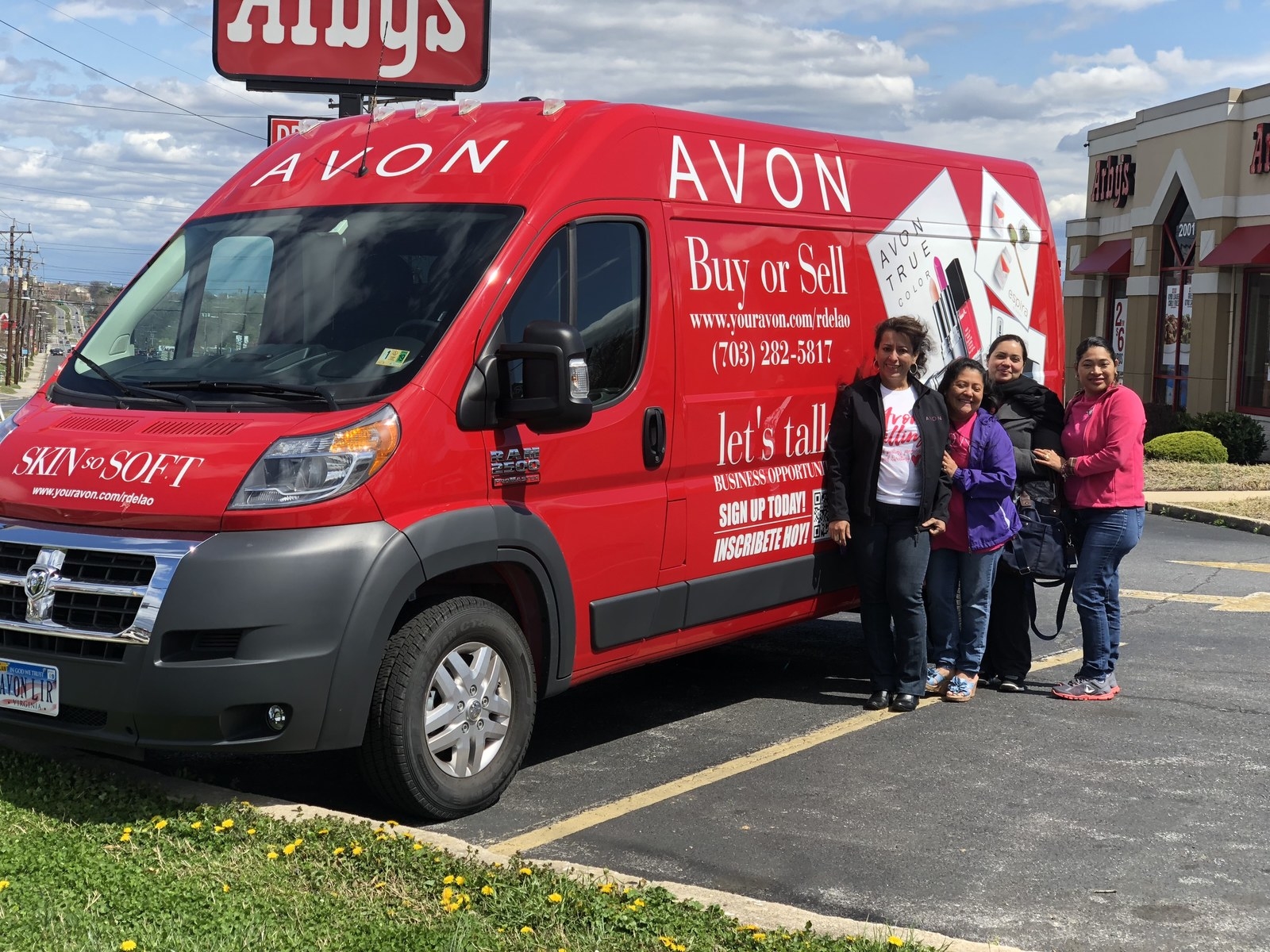
Undeterred, Rosa and David saved to buy a Dodge Ram, making sure the color was exactly the right shade of red. The compromise Rosa eventually made with the company was that they allowed her to use the Avon logo and other product images to plaster the van.
The van, albeit an easy marketing strategy to overlook in a time when people are more apt to buy what they see on their phone than what’s in front of their face, speaks to the core of what Rosa and Avon’s fleet of top sellers are determined to accomplish. At RepFest, you could see the company’s slogan plastered everywhere: “I Am Avon.” Its meaning is a little nebulous and speaks to the way Avon — like most MLMs — can break down barriers between its sellers’ personal and professional lives, in ways that aren’t always positive. But Rosa and her team embody that slogan literally: They are Avon, or at least one of the most vibrant and growing parts of it. And they are determined to make the company notice.
“Sometimes I still need David when I need to say something to Avon, to communicate,” Rosa, the powerhouse I know now, told me, reflecting on her early days as a seller, when David was her translator. “But now it’s about being more independent, to make my voice count. I’m making extra noise.” ●
Tonya Riley is a writer based in Washington, DC.
